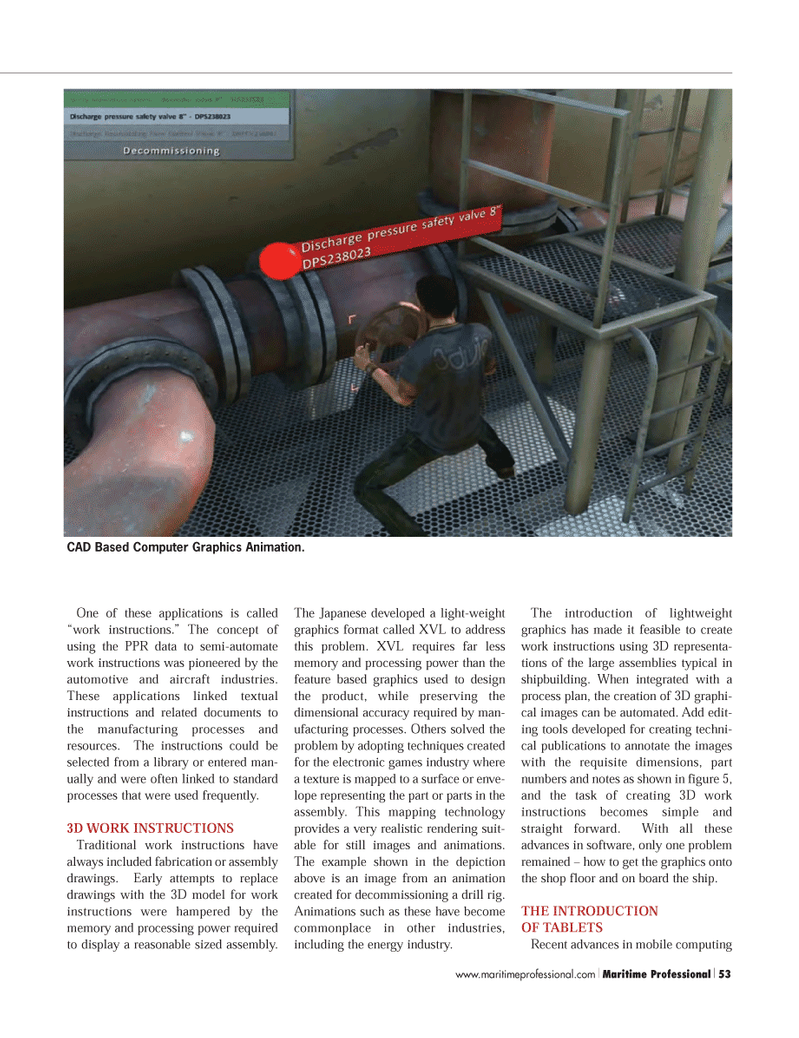
Page 53: of Maritime Logistics Professional Magazine (Q4 2011)
Classification
Read this page in Pdf, Flash or Html5 edition of Q4 2011 Maritime Logistics Professional Magazine
www.maritimeprofessional.com Maritime Professional 53 One of these applications is called?work instructions.? The concept of using the PPR data to semi-automatework instructions was pioneered by the automotive and aircraft industries. These applications linked textual instructions and related documents tothe manufacturing processes and resources. The instructions could be selected from a library or entered man-ually and were often linked to standard processes that were used frequently. 3D WORK INSTRUCTIONS Traditional work instructions have always included fabrication or assembly drawings. Early attempts to replace drawings with the 3D model for work instructions were hampered by thememory and processing power required to display a reasonable sized assembly. The Japanese developed a light-weight graphics format called XVL to addressthis problem. XVL requires far less memory and processing power than the feature based graphics used to designthe product, while preserving thedimensional accuracy required by man- ufacturing processes. Others solved the problem by adopting techniques createdfor the electronic games industry wherea texture is mapped to a surface or enve- lope representing the part or parts in theassembly. This mapping technology provides a very realistic rendering suit- able for still images and animations.The example shown in the depiction above is an image from an animation created for decommissioning a drill rig.Animations such as these have become commonplace in other industries,including the energy industry. The introduction of lightweightgraphics has made it feasible to creatework instructions using 3D representa- tions of the large assemblies typical in shipbuilding. When integrated with a process plan, the creation of 3D graphi-cal images can be automated. Add edit- ing tools developed for creating techni- cal publications to annotate the imageswith the requisite dimensions, partnumbers and notes as shown in figure 5, and the task of creating 3D work instructions becomes simple andstraight forward. With all these advances in software, only one problem remained ? how to get the graphics onto the shop floor and on board the ship.THE INTRODUCTION OF TABLETSRecent advances in mobile computing CAD Based Computer Graphics Animation.MP #4 (50-64):MP Layouts 11/8/2011 2:29 PM Page 53

 52
52

 54
54
